What's New
Displaying results 1861 - 1870 of 4052
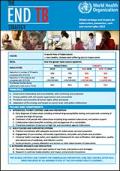
Resource | Fact Sheets,
Ending the global TB epidemic is feasible with dramatic decline in TB deaths and cases, and elimination of economic and social burden of TB. Failure to do so will carry serious individual and global public health consequences.
To ensure full impact, actions must build on principles of government stewardship, engagement of civil society, human rights and equity, and adaptation to the unique context of diverse epidemics and settings.
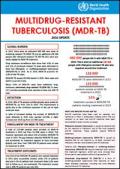
Resource | Fact Sheets,
In 2015, there were an estimated 480 000 new cases of multidrug-resistant TB (MDR-TB) and an additional 100,000 people with rifampicin-resistant TB (RR-TB) who were also newly eligible for MDR-TB treatment. Drug resistance surveillance data show that 3.9% of new and 21% of previously treated TB cases were estimated to have had rifampicin- or multidrug-resistant tuberculosis (MDR/RR-TB) in 2015. As in 2014, MDR-TB accounts for 3.3% of new TB cases.
MDR/RR-TB caused 250,000 deaths in 2015. Most cases and deaths occurred in Asia. About 9.5% of MDR-TB cases have additional drug-resistance, extensively drug-resistant TB (XDR-TB). To date, 117 countries worldwide have reported at least one XDR-TB case.
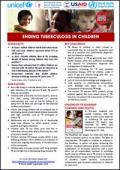
Resource | Publications,
At least 1 million children fall ill with tuberculosis (TB) each year. Children represent about 11% of all TB cases. In 2015, 210,000 children died of TB, including 40,000 TB deaths among children who were HIV positive. Researchers estimate that 67 million children are infected with TB (latent TB) and are therefore at risk of developing disease in the future.
Researchers estimate that 25,000 children develop multidrug-resistant TB every year.
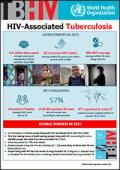
Resource | Fact Sheets,
-An estimated 1.2 million people living with HIV worldwide fell ill with TB in 2015.
- TB is the leading cause of death among people living with HIV, accounting for some 390,000 people who died from HIV-associated TB in 2015.
- Africa accounted for 75% of all deaths.
- Globally people living with HIV are 19 times (17 – 22) more likely to fall ill with TB than those without HIV.
- People living with HIV face the threat of drug-resistant TB. If diagnosis is delayed there is increased risk of mortality from multidrug-resistant and extensively drug-resistant TB.
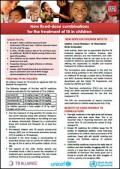
Resource | Fact Sheets,
Until recently, there was no appropriate first-line TB treatment designed for children. However, after sustained advocacy and new investment, now child-friendly formulations that do not need to be cut or crushed to achieve an appropriate dose are available, offering the opportunity to simplify and improve treatment for children everywhere.
The formulations were developed in line with the revised dosing published in the 2014 WHO Guidance on childhood TB through a project led by TB Alliance and WHO (Essential Medicines and Health Products department and the Global TB Programme), and funded by UNITAID and USAID.
The fixed-dose combinations (FDCs) are not new drugs, but rather improved formulations of currently used medicines recommended for the first line treatment of TB.
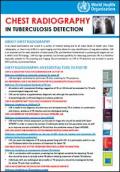
Resource | Fact Sheets,
X-ray based examinations are crucial in a variety of medical setting and at all major levels of health care. Chest radiography, or chest X-ray (CXR) is a rapid imaging tool that allows for easy identification of lung abnormalities. CXR is an essential tool for early detection of tuberculosis (TB), and therefore fundamental to achieving the targets set out in WHO’s End TB Strategy. CXR has high sensitivity, but limited specificity for detecting pulmonary TB. It is therefore especially suitable for TB screening and triaging. Recommendations on CXR in TB detection are included in several WHO policies, summarized below.
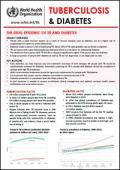
Resource | Fact Sheets,
- People with a weak immune system, as a result of chronic diseases such as diabetes, are at a higher risk of progressing from latent to active tuberculosis.
- Diabetes triples a person’s risk of developing TB. About 15% of TB cases globally may be linked to diabetes.
- TB can temporarily cause impaired glucose tolerance which is a risk factor for developing diabetes
- The likelihood that a person with TB will die or relapse is significantly higher if the person also has diabetes.
- A large proportion of people with diabetes as well as TB are not diagnosed, or are diagnosed too late.
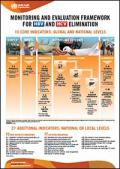
Resource | Tools,
Monitoring and Evaluation for HBV and HBC Elimination - 10 Core Indicators: Global and National Levels
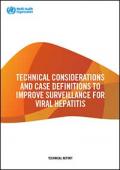
Resource | Publications,
Viral hepatitis is a global public health problem of epidemic proportions that causes 1.46 million deaths each year. New infections caused by the five known hepatitis viruses – A, B, C, D and E (HAV, HBV, HCV, HDV and HEV) – can be prevented. In addition, testing and treatment can improve the health of persons with chronic infections. Unfortunately, many countries do not have the epidemiological information needed to plan, implement, monitor, evaluate and update national strategies for the prevention and control of viral hepatitis. The technical aspects associated with viral hepatitis surveillance are perceived as complex, and little guidance is available. In the absence of a sound evidence base, viral hepatitis remains a silent epidemic. Tools are available, however, to optimize surveillance and generate information that can effectively direct prevention, control and treatment policies.
In 2010 and 2014, World Health Assembly resolutions called for stronger surveillance of viral hepatitis. In response, the World Health Organization (WHO) has developed these technical considerations to assist and guide Member States in implementing and/or optimizing viral hepatitis surveillance.
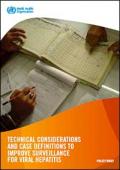
Resource | Publications,
Viral hepatitis is a global public health problem of epidemic proportions that causes 1.46 million deaths each year. New infections caused by the five known hepatitis viruses – A, B, C, D and E (HAV, HBV, HCV, HDV and HEV) – can be prevented. In addition, testing and treatment can improve the health of persons with chronic infections. Unfortunately, many countries do not have the epidemiological information needed to plan, implement, monitor, evaluate and update national strategies for the prevention and control of viral hepatitis. The technical aspects associated with viral hepatitis surveillance are perceived as complex, and little guidance is available. In the absence of a sound evidence base, viral hepatitis remains a silent epidemic. Tools are available, however, to optimize surveillance and generate information that can effectively direct prevention, control and treatment policies.
In 2010 and 2014, World Health Assembly resolutions called for stronger surveillance of viral hepatitis. In response, the World Health Organization (WHO) has developed these technical considerations to assist and guide Member States in implementing and/or optimizing viral hepatitis surveillance.





